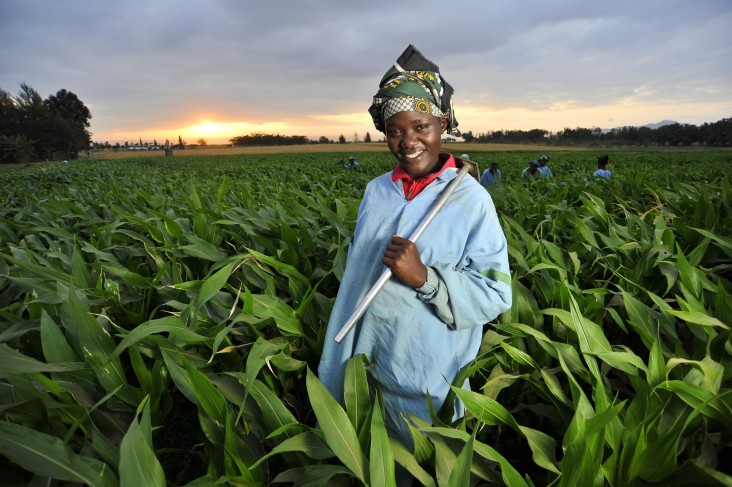Speeches Shim

East Africa’s economic growth is among the fastest in the world and its countries are becoming increasingly integrated and interdependent. USAID supports regional institutions, including the East African Community (EAC), the Common Market for Eastern and Southern Africa (COMESA), the Intergovernmental Authority on Development (IGAD), and their member states to address issues that require collaboration between countries.
PROMOTING REGIONAL TRADE: USAID is reducing barriers to trade with and within East Africa by improving the efficiency and transparency of cross-border transactions, harmonizing safety and quality standards and reducing the time and cost of doing business in the region. Through greater investment and trade opportunities, our programs are advancing the interests of African entrepreneurship and the private sector, as well as its American counterparts.
ENHANCING REGIONAL FOOD SECURITY AND RESILIENCE: By strengthening the ability of regional organizations to deliver on their mandate, USAID is helping safe, quality food move quickly and freely throughout the region. These investments also support research to address major agricultural threats such as aflatoxin and maize lethal necrosis, and help communities withstand cycles of drought without needing to rely on humanitarian assistance.
BRINGING POWER TO AFRICA: USAID works with national governments and regional organizations to develop and improve power infrastructure, such as power plants and grids, and create the policies and regulatory frameworks necessary to fully utilize the region’s substantial renewable energy resources.
IMPROVING THE HEALTH OF EAST AFRICANS: USAID helps marginalized and at-risk communities living and working in border areas and transit corridors access quality health services, with a focus on HIV, polio, and tuberculosis prevention and treatment. Our efforts also bring together environmental, public health, veterinary and wildlife experts to prevent, detect and respond to outbreaks of infectious diseases of animal origin before they escalate into costly epidemics.
REDUCING CONFLICT AND SUPPORTING PEACE: Frequent and often deadly conflict between communities across borders – especially between Ethiopia, Kenya, Somalia, South Sudan and Uganda – contributes to the instability of the region. To prevent conflicts from turning violent, USAID supports a regional early warning system linked to community groups and governments from all sides of the conflict, in efforts to lead an early, effective and united response.
CONSERVING AND PROTECTING NATURAL RESOURCES: USAID facilitates collaboration between countries to manage shared natural resources that support the livelihoods of millions of people throughout the region. Our programs also empower communities, businesses and governments with information and tools to integrate conservation into daily routines, operations and national planning.
PROVIDING HUMANITARIAN ASSISTANCE: Through the Office of U.S. Foreign Disaster Assistance and Food for Peace, USAID responds to humanitarian needs across the region. These efforts include the distribution of emergency relief commodities; interventions to increase access to critical health, nutrition and water, sanitation and hygiene services; and the provision of protection assistance, among other activities.
CREATING OPPORTUNITIES FOR YOUNG AFRICAN LEADERS: USAID supports a regional center that provides youth (aged 18 to 35) from 14 countries in East and Central Africa with training in business and entrepreneurship, civic leadership and public management.

Comment
Make a general inquiry or suggest an improvement.